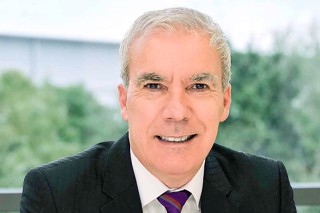The opportunity for dealers to sell cars remotely has never been greater, but once your marketing efforts have attracted a customer to visit your website or phone your dealership, how do you show them a car without recourse to the presentation skills you have honed on years of showroom customers?
The short answer, of course, is technology, which allows the dealer to give the customer an accurate picture (See ‘Keep your sales on the right side of the law’ on page 54) of the vehicle they are purchasing – including descriptions of the features, images and videos. However, staff must also engage with the customer through phone calls, text messaging, emails and/or live chat, as well as guided web browsing, where necessary, to help them complete the buying journey.
According to iVendi’s inaugural report on online motor retailing, almost four out of five (79%) customers surveyed would be confident or completely confident buying a car online. However, there is still work to do, with 57% of respondents believing that motor retail lags behind the best online retail experiences.
That’s borne out by the fact that 43% of dealers questioned said they plan to increase their online retail activity in the next 18 months, while 33% of manufacturers said they plan to offer the option to buy and finance a car online within the next 18 months.
Overcoming the obstacles to distance selling
“The main barriers to buying a car online related to the desire to see and test drive the car as well as the security aspect, while for financing a vehicle online the barriers related to confidence and security,” said James Tew, iVendi’s chief executive.
“The positive factors making consumers more likely to buy and finance a car online were seen to be ‘trust in brand’ followed by the lifestyle factors of a non-pressurised sale and convenience.”
Chris Penny, Auto Trader’s franchise brand director, added: “Ultimately, from first click and then throughout their entire journey, it’s essential to present cars perfectly for all buyers. It’s no longer a competitive advantage, but rather a fundamental requirement for success.”
Penny said because car buyers are discerning by their nature, it is important to present as many different ways of viewing and reading about the vehicle as possible. That includes videos, images and detailed descriptions, he said.
“Car buyers are fickle beasts and want to consume content ‘their way’ so you can’t focus on one method over another,” he said. “You need them all and they all need to be to a standard that properly represents a retailers’ care and attention to detail.”
Creating an artificial ‘test drive’
Tew believes video is the most effective method of presentation. It is already being done to a certain extent by companies such as CitNOW and AutosOnShow, he added.
“Effectively what you are trying to do is to create an artificial test drive,” he said. “It’s all about extending the digital journey for the customer.
“Now you can send them a personalised video of the car from anywhere in the country so that they can see it for themselves. The challenge for the dealer, however, is that when video becomes the norm they will have to move to the next level of digital delivery, whatever that is.”
Škoda, for example, has a team of seven product hosts that use a mix of static and handheld cameras to showcase its range and to answer customers’ questions. Its Live Tour has been running for a year and has already delivered more than 2,000 hours of product demonstrations.
Tew said dealers need to take as many high-quality pictures of the vehicle from as many angles as possible, both inside and out, covering the full inventory and descriptions where necessary. He added that improvements in image quality, as well as the use of 360-degree interior and exterior imaging, from companies such as Spin 360, have helped the dealer to boost sales.
“Being able to zoom in and see certain parts of the vehicle is key,” he said. “I certainly think there is a correlation between the number of images of a vehicle that are viewed by a customer and purchasing that model.”
Dermot Kelleher, marketing and business intelligence director for Motors.co.uk, said imagery and faster broadband speeds have combined to help dealers: “Motors has been going for 10 years and for the first seven or eight years, we could only offer dealers the opportunity to post 10 images associated with their vehicles.
“In the past two years, we’ve gone from 10 to 25, and now it’s 100. We’ve done that because storage costs and page load speeds are now much more sophisticated, enabling us to render 100 images on a page in a way that just wasn’t there three years ago.
“Undoubtedly, imagery and video are probably the two key drivers of why dealers now feel like they can put a car out there that will be able to give a good consumer experience without that consumer actually having to touch it.”
Penny said research by Auto Trader of 13,500 retailers has found a correlation between the volume of imagery and buyer engagement. And as the volume increased so did the quality, he said.
“It’s the quality that car buyers respond to,” he said. “After all, if you can’t photograph or video a vehicle to a high standard, what else haven’t you done to a high standard?
“These are the subconscious questions that buyers are asking themselves in the split seconds they choose to click on one advert over another.”
Karl Werner, the chief executive of MotoNovo’s motor finance division, said: “High-quality images, videos and guides all help paint a picture of the car and the dealer’s approach. It’s very simple to incorporate technology that truly brings the ‘showroom to the home’ – video, dynamic imaging and Skype are all readily available technologies.
“Secondly, take a fresh look at the way the car is presented and ask yourself ‘what makes this car, and my business, unique?’ If your answer doesn’t come across online, then it’s unlikely you are making the most of the opportunity.”
Building customer trust
In order to enhance the vehicle’s presentation, Shaun Harris, sales director at Codeweavers, said dealers need to make the process easier and to build greater trust with the customer. That is done by reviewing the information provided on their website, the brand’s personality and tone of voice, and quality of service such as extended warranties, he said.
Harris said multiple pictures and video were strong indicators of transparency.
“I’ve known dealers complete a walkaround of a distance customer’s chosen car pointing out features and benefits and any defects – this last element is highly compelling for both car and dealer,” he said.
Darren Williams, director at Elements PRMC, said that when presenting a vehicle online, dealers need provide customers with a personal presentation after an enquiry. One company offering this service is AutoLoad IT, an online vehicle management tool, he said.
“A good piece of camera work operated by a competent individual (with photography skills) in a suitable environment to take the images is a prerequisite,” he said.
“Of late, we have seen dealers really embrace this by doing away with the options provided by the platform providers and addressing their own shortcomings in this area.”
Complete and accurate information
Dealers must provide accurate and complete information, ensuring every aspect of the vehicle, including function, aesthetics and technical details, is covered. They can also use tools such as a vehicle condition report, traditionally used by car hire companies, to flag any obvious defects to the customer.
As with online auction listings, the car should be accompanied by confirmation of service history, mileage, the presence of a spare key and spare wheel, if fitted, and pictures of any minor damage.
When it comes to communication, although dealers will want to keep as many channels open as possible to give the customer a wider choice, Williams said the method of response should fit the nature of the enquiry, and should also be done in a timely manner. While one-to-one dialogue can help to build a rapport and trust with the customer, he said there’s nothing more irritating than being called back by an automated service when all you want is a simple response to an online query.
“As far as the tools available, anything that engages is a good thing, but a word of caution – ensure your staff are properly trained in how to use them and their behaviour, language and conduct is appropriate,” he said.
“Those I have seen done well are clearly expertly planned in relation to the enquiry. For example, the car is positioned in a quiet, suitable place, the vehicle is cleaned and well presented, its condition is evidenced and its unique functions are featured and demonstrated.”
Tew said live chat is one of the most powerful communication tools available to the dealer. However, he added that many dealers are missing out on a big opportunity to sell during the busiest time for online searching – 7pm-9pm on Sunday, when most dealerships are closed.
Artificial intelligence (AI) can also be used to answer basic customer questions on live chat, enabling agents to focus on more complex and technical enquiries. To this extent, suppliers, such as True AI, have estimated that live chat responses could be automated in up to 33% of cases.
Guided web browsing
Another option is guided web browsing, said Tew. However, he warned that if it has to be used extensively, that negates the purpose of buying a vehicle online in the first place.
“The two areas where this would be most beneficial are firstly in new vehicles and the sale of options which the customer doesn’t know about,” he said. “Then there is the sale of F&I products by taking control of the browser and walking them through the product and how it works.”
Werner added: “Online customers look for services that offer them the opportunity to go as far on the buying journey as they want. Any online service that abruptly comes to a halt (such as contract forms rather than finance application forms) fails to maximise the opportunity every time.”
Ed Parkinson, director of sales development at Contact At Once!, said dealers need to focus more on the digital side of communication, which many have tended to neglect in favour of the phone call. In doing so, they must have an easy-to-use and responsive system for the customer, he said.
“It’s like a three-legged stool, where the first leg is how do you find the vehicle online, the second leg is how do you communicate that to your family and friends to get their feedback, and the final leg is how do you communicate with the car dealer to make the purchase?” he said.
“The dealer can help them in that journey by making it as transparent as possible and provide them with the answers they need to make an informed choice.”
Parkinson believes dealers will use more artificial intelligence (AI) such as chatbots and apps such as Apple Business Chat, but said this
technology needs to be used to complement the service they already provide.
“The dealer needs to have the appropriate platforms for communication and a focused team of people who can deliver on the conversational side of the deal,” he said.
“After all, no car was ever sold without conversation of some kind.”
Offering FCA-compliant motor finance online
Dealers have to have a compliant online financial agreement process that includes transparency throughout the financing journey, affordability checking and commission arrangements. To achieve this, the customer can use tools such as a digital authorisation signature to verify the options they have selected in a compliant manner.
The Financial Conduct Authority (FCA) also stipulates that car dealers’ financial promotions and adverts must be fair, clear and not misleading.
Spencer Halil, director of Alphera Financial Services UK, said dealers need to present their product choice simply and transparently, to allow the customer make their own decision.
This can include, he said, FAQs, comparison tables, images and descriptive explanations, as well as short videos, in the future possibly extending to live chat.
“The critical point is that there should be no bias or agenda in the explanations – let the customer choose what is right for them, not what works best for the dealer or lender,” he said.
Tew said dealers should bring finance into the buying process at the earliest opportunity so the customer can view the different payment options available to them and then match that to their chosen vehicle.
“We offer a choice of products including PCH, PCP and HP, either through a single lender or across a panel of lenders that the dealer works with, that allow the customer to compare the products against each other,” he said.
Drayton Kia, in Lincolnshire, found its F&I sales were dropping off with distance buyers. General manager Darren Bradford had a dedicated F&I website built, which is incorporated into its distance selling process, to ensure products are offered compliantly before an order can be processed.
Simon Cadbury, head of strategy and innovation at Intelligent Environments, said calculators, ratings and reviews are other useful tools in helping the customer to choose the right product.
“It’s about simplifying the buying process through using more conversational tools that let the customer complete the application more quickly because they are personalised and only ask the relevant questions,” he said.
When using social media, the FCA recommends signposting a product or service with a link to more comprehensive information or to use images for a more general promotion. Tew said the best way to promote finance deals through social media is by using an image with a link to the dealer’s website that is first vetted by the compliance department to make sure it meets FCA rules.
“Using an image is a safe way to promote your finance deal on social media and then tweak it accordingly, depending on which platform you are using, provided it has been thoroughly vetted by compliance beforehand,” he said.
Paul Harrison, Auto Trader’s head of motor finance, said social media should be used to start the conversation rather than promoting the full finance proposition because of the difficulty in conveying a monthly payment where a rate of interest is attached.
Halil also believes social media should be used carefully.
“Social media is a very different medium to traditional marketing and it needs to be engaged with in a different way – smaller ‘snackable’ chunks of information.” ALEX WRIGHT



















Login to comment
Comments
No comments have been made yet.